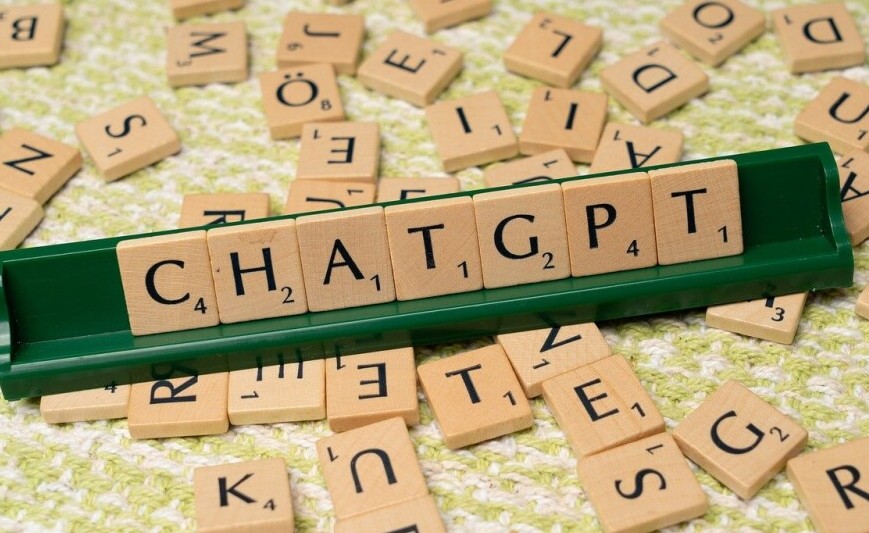
In this article, we explore using GPTs for mental health and well-being. In recent years, technology has been marching forward at an incredible pace, and now it’s leaving its mark on mental health, too. Everything from smartphones to advanced AI tools is reshaping the landscape, making mental health support more accessible. Enter GPTs—these generative pre-trained transformers are turning out to be game-changers.
GPTs have the potential to transform how we address mental wellness. Think about it: these AI tools can help bridge gaps in accessing mental health resources. Whether it’s providing personalized insights or supporting ongoing therapy, these systems bring a lot to the table. They’re like having a little digital assistant who’s always ready, no appointments needed.
But why do we need GPTs in mental health? The sector’s grappling with numerous unmet needs. There just aren’t enough providers to meet the demand. Long waiting lists and the stigma around seeking help make the problem worse. With GPTs, there’s hope for more immediate support—a virtual friend who listens and responds when needed.
Imagine a world where mental health services are just a click away. Where you type out your worries, and the service offers thoughtful responses or guides you to helpful resources. That’s not a dream anymore. It’s happening now, thanks to these innovative tools that are slowly becoming integral to the mental health framework.
The integration of GPTs into mental health care isn’t just about convenience. It’s about leveling the playing field. Giving everyone, everywhere, a chance to access the help they need. This is just a sneak-peek into the potential transformations we’re seeing on the horizon. Watch this space, because the future’s coming fast.
What Are GPTs: A Brief Overview

Generative Pre-trained Transformers, or GPTs, might sound like something out of a sci-fi novel, but they’re actually a cutting-edge technology that’s here now. Essentially, these systems are a type of artificial intelligence that can understand and produce human-like text based on a vast amount of data they’ve been trained on.
Think about how you might interact with a chatbot online. GPTs use similar principles but operate at a much more advanced level. They can analyze text inputs, recognize patterns, and generate nuanced responses that genuinely seem almost human. This ability to mimic conversational style and context is what makes them so intriguing for mental health applications.
You might wonder how these machines manage to grasp human language so effectively. It’s all about the training they undergo. Developers feed these systems immense amounts of text—from books, articles, and other written content—which helps the AI learn language in a detailed and robust way. As the AI processes more data, its ability to generate coherent and relevant texts increases.
GPTs have been making waves in various fields, not just mental health. They’ve been applied in areas ranging from chatbots for customer service to writing and content creation tools. Each application showcases their flexibility and growing importance across different industries.
Now, as these systems inch closer to the realm of psychiatry, psychology, and coaching, their potential to support mental health care becomes even more apparent. They aren’t just there to replace human interaction but rather to complement it, augmenting the resources available to professionals and individuals alike.
GPTs in Psychiatry: A New Frontier

GPTs are paving fresh paths in psychiatry. They’re not here to replace psychiatrists but to act like a trusty sidekick. Imagine combining advanced data processing with the empathetic touch of a human professional. That’s the sweet spot we’re heading toward.
These AI systems can revolutionize diagnostics and treatment plans by analyzing patient data efficiently. For a psychiatrist, having an AI like GPT sift through symptoms and history can highlight patterns that might not be immediately obvious. It’s like having a second pair of eyes that don’t miss a detail.
Treatment can get a boost from this technology too. GPTs can help in tailoring therapies to suit individual needs. By understanding and predicting patient reactions, they enable more personalized care plans. Plus, they can keep up with the latest research and help professionals stay ahead of the curve.
But it’s not all smooth sailing. The use of GPTs brings ethical questions. How much should we rely on them? What about patient confidentiality and privacy? These issues need careful consideration. Open dialogues in the medical community can help address these dilemmas, ensuring these tools are used wisely.
Integrating GPTs into psychiatry requires balancing innovation with caution. Building systems that augment human expertise without overshadowing it is vital. Health professionals can benefit from this extra layer of support, offering better care, and ultimately, better health outcomes to those who need it most.
Psychology and GPTs: Bridging Science and Technology

Psychology’s always been at the heart of understanding human behavior, and now, GPTs are stepping into the mix, adding a layer of tech-savvy support. These tools are not just about processing words, but about capturing the nuanced dynamics of human conversation and emotion.
Therapists can use GPTs to bolster their methods, integrating AI’s analytical capabilities into traditional therapeutic processes. It offers a hybrid approach that combines empathetic counseling with data-driven insights. For example, imagine a scenario where an AI could help track the emotional patterns of a client over time, providing therapists with an edge in understanding and planning sessions.
These systems can also offer a new dimension to psychological assessments. GPTs can support therapists in crafting personalized therapy approaches, providing real-time suggestions based on current data and past outcomes. This could mean more targeted therapies that address specific areas of concern, rather than broad, one-size-fits-all solutions.
The potential here is grounded in emerging studies that are continually unveiling new ways these systems can be used effectively in psychology. Early adopters are seeing how GPTs can assist in cognitive-behavioral therapy, offering prompts, exercises, and even emotional support messages to clients between sessions.
Still, there’s the question of dependency. Balancing the use of technology with human interaction is key. The goal is to enhance the therapeutic alliance, not disrupt it. Every tech solution should be a tool to bring therapist and client closer, not a barrier between them. Keeping this balance is crucial as we see more of these systems joining therapy rooms around the world.
Life Coaching Enhanced: The GPT Perspective

Life coaching’s always been about empowering individuals to reach their goals and GPTs are adding some interesting flair to the mix. These AI systems are helping coaches provide even more personalized guidance, tapping into vast data reserves to tailor plans that suit each individual perfectly.
Imagine having an assistant that can analyze your progress and suggest tweaks to your coaching strategies in real time. That’s the kind of dynamic support GPTs are bringing to life coaching. They’re not just about logging data but about finding meaning in it, identifying patterns, and offering insights that might take a human coach much longer to discover.
For coaches, this means being able to offer tailored advice that goes beyond the standard playbook. Whether it’s helping clients with organization, motivation, or time management, GPTs can provide the kind of customized advice that keeps clients engaged and on track. It’s like having a high-tech co-coach that widens the scope of what can be achieved together.
But the real power comes from stories of success. Many who’ve integrated GPTs into their coaching practices report increased client satisfaction and faster achievement of personal goals. With AI handling the data crunching, coaches can focus more on the human aspects that require empathy, understanding, and motivation.
Still, the balance between tech inputs and the human touch is crucial. Clients must feel that their journey is being guided by someone who understands them, not just an algorithm. Coaching with GPTs isn’t about following a script but enhancing the personal connection with actionable insights, making the journey to self-improvement both effective and inspiring.
Transitioning From Traditional to Digital: Embracing Change
The shift from traditional to digital in mental health services is stirring up quite the conversation. It’s a mix of excitement and hesitation as we explore the possibilities that digital tools like GPTs bring to the table. The benefits are undeniable—more accessibility, efficiency, and innovative solutions that were once impossible.
However, change isn’t always met with open arms. Many in the mental health community feel apprehensive about adopting new technologies. Concerns about losing the personal touch in care and relying too much on machines are valid. That’s why fostering an understanding of these tools and how they work alongside human professionals is crucial.
It helps to focus on the positives digital tech can offer. With empirical evidence backing their effectiveness, AI systems are showing that they’re not here to replace jobs but to make them easier. Research studies are continually demonstrating how these systems enhance patient outcomes by providing additional resources and insights.
Early adopters of AI in mental health have noticed significant improvements in efficiency and patient engagement. These ‘pioneers’ found that embracing digital tools with an open mind can actually strengthen the therapeutic process, allowing therapists to spend more time interacting with clients instead of bogged down with paperwork.
Understanding the core purpose of these tools—support, not substitution—makes the transition smoother. When mental health professionals see that GPTs are here to enhance their roles rather than diminish them, skepticism gradually evolves into acceptance and, eventually, collaboration.
Adjusting to digital isn’t without its challenges, but being proactive and informed makes the journey less daunting. By building a community of support and sharing success stories, these changes can feel like new opportunities rather than threats.
Addressing Limitations: Layer of Caution

Exploring the world of GPT in mental health, while exciting, requires a deep dive into its limitations. AI technologies bring amazing capabilities, yet they’re not without their hurdles. The key is approaching these tools with a healthy dose of caution to ensure they’re safe and effective.
Ethical and privacy concerns top the list of priorities. When dealing with sensitive personal data, it’s vital to have stringent measures in place to protect confidentiality. Ensuring that data is processed securely and anonymously can help alleviate a lot of potential worries around privacy breaches.
Bias is another significant issue that needs tackling. GPTs learn from existing data, but if that data is skewed or biased, it can lead to undesirable outcomes. It’s essential to recognize and address these biases, working continuously on refining the AI models for fairer outputs.
Moreover, while GPTs can offer incredible insights and efficiency, they’re not perfect. Mistakes can happen. Having robust protocols for monitoring and correcting AI errors is critical. This minimizes the risk of misinformation and ensures that the systems remain helpful rather than harmful.
Effective and safe implementation of GPTs involves a multi-layered approach: involving thorough testing, constant evaluation, and a willingness to adapt systems as needed. Evolving regulations and guidelines around AI use are important to keep an eye on, providing frameworks to ensure these tools are used responsibly.
In this rapidly evolving landscape, professionals must remain vigilant and proactive, keeping limitations in mind. Balancing innovation with responsibility ensures that GPTs can continue to be a positive force in the mental health domain.
Future Implications and Developments
Looking ahead, it’s clear that GPTs are set to impact the mental health landscape even more profoundly. Experts are buzzing with predictions, forecasting a tighter integration between AI and mental health practices. This integration could redefine how services are delivered, making them more immediate and tailored.
We’re seeing AI not just as a tool but as a partner in therapy. The idea here is combining the precision of AI with the warmth of human interaction, creating a synergy that could take mental health care to new heights. AI’s increasing sophistication suggests that the relationship between machines and therapists will deepen, offering enhanced support that was once unimaginable.
For patients, this evolution means more options. Imagine access to a round-the-clock virtual support system that understands context, emotions, and history, providing insights when needed most. Giving patients control and choices in how they receive support could transform personal health management, making it more engaging and satisfying.
Professionals are also set to benefit. Continuous advancements in AI could mean that practitioners have powerful allies in research, diagnostics, and treatment planning, allowing them to focus more on what they do best—providing human care, empathy, and understanding.
The horizon is also dotted with evolving technologies that could further enhance AI capabilities, like AI-driven biofeedback tools or predictive analytics that spot warning signs before they escalate. These innovations could become critical components in proactive care strategies, emphasizing prevention over cure.
Navigating into this future, it’s all about embracing these tools thoughtfully, prioritizing ethical implementation and human-centered approaches. As the mental health community continues to engage with AI, it must do so with an eye on how technology and humanity can work together for better outcomes.
Conclusion: The Balance Between Tech and Touch

As we wrap up our exploration of GPTs in mental health, it’s clear that technology is opening doors we never thought possible. These innovations are paving the way for more accessible and personalized care, bringing services to more people than ever before. Yet, amid all the technological advancements, maintaining the human element in mental health support is critical.
While GPTs can provide valuable insights and resource efficiency, they should complement rather than replace face-to-face interactions and the therapist’s empathetic touch. After all, mental health isn’t just about data and stats—it’s about connection, understanding, and empathy.
Encouraging conversations between AI developers and mental health professionals could lead to tools that enhance, not overshadow, the human side of care. It’s about finding a sweet spot where technology supports practitioners without taking over the therapeutic journey.
For individuals seeking help, this tech evolution means more choices and perhaps faster access to care, but it’s important to discern when digital support suffices and when personal interaction is necessary. The goal is an integrated approach, balancing high-tech solutions with high-touch care.
Ongoing dialogue and collaboration among stakeholders are essential to navigate this new landscape. By keeping the focus on patient-centered care and ethical practices, we can harness the potential of GPTs while preserving the all-important human connection. The journey isn’t just about what’s possible with AI but ensuring it’s always used to bolster the essential human elements of empathy and care in mental health.






